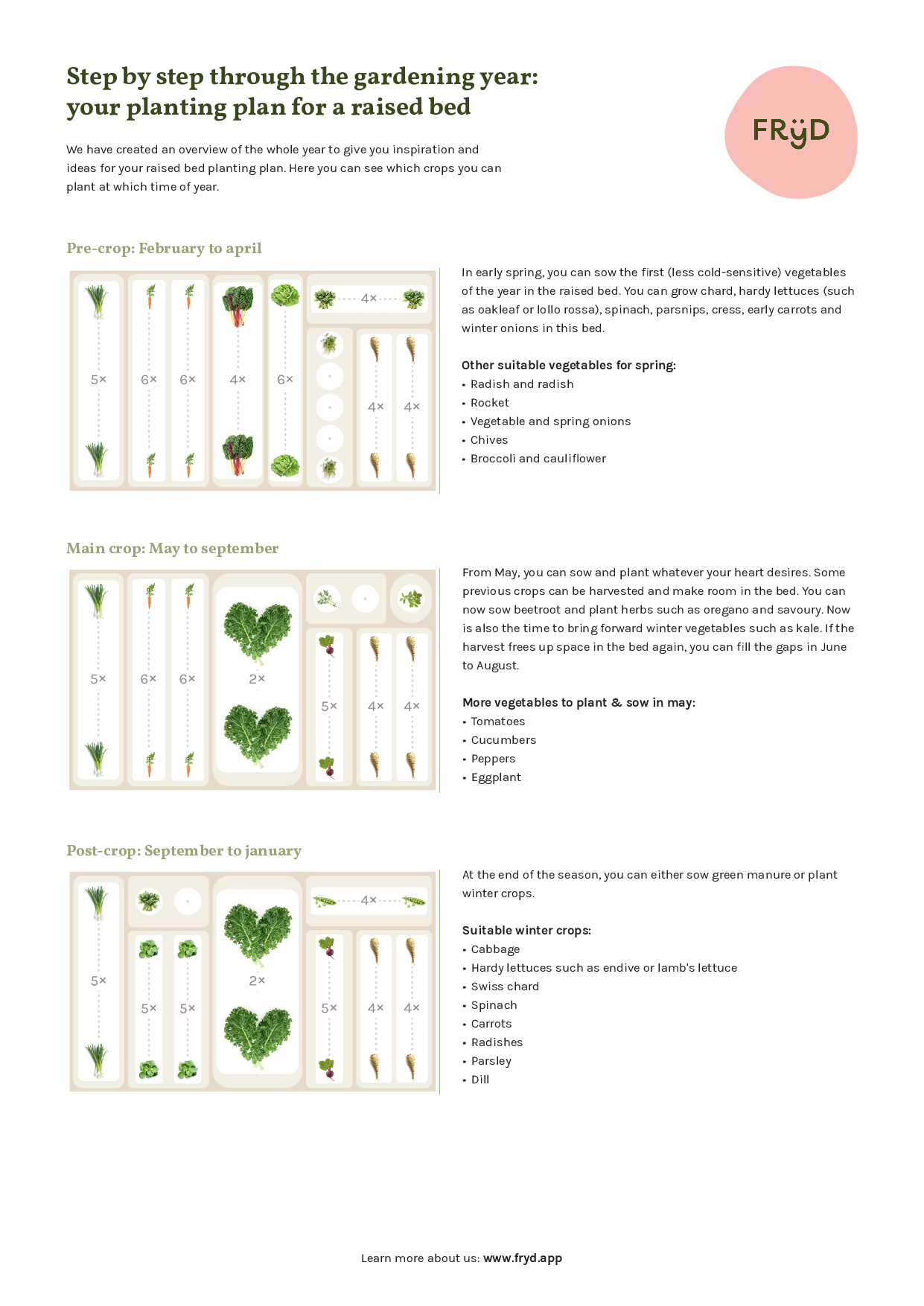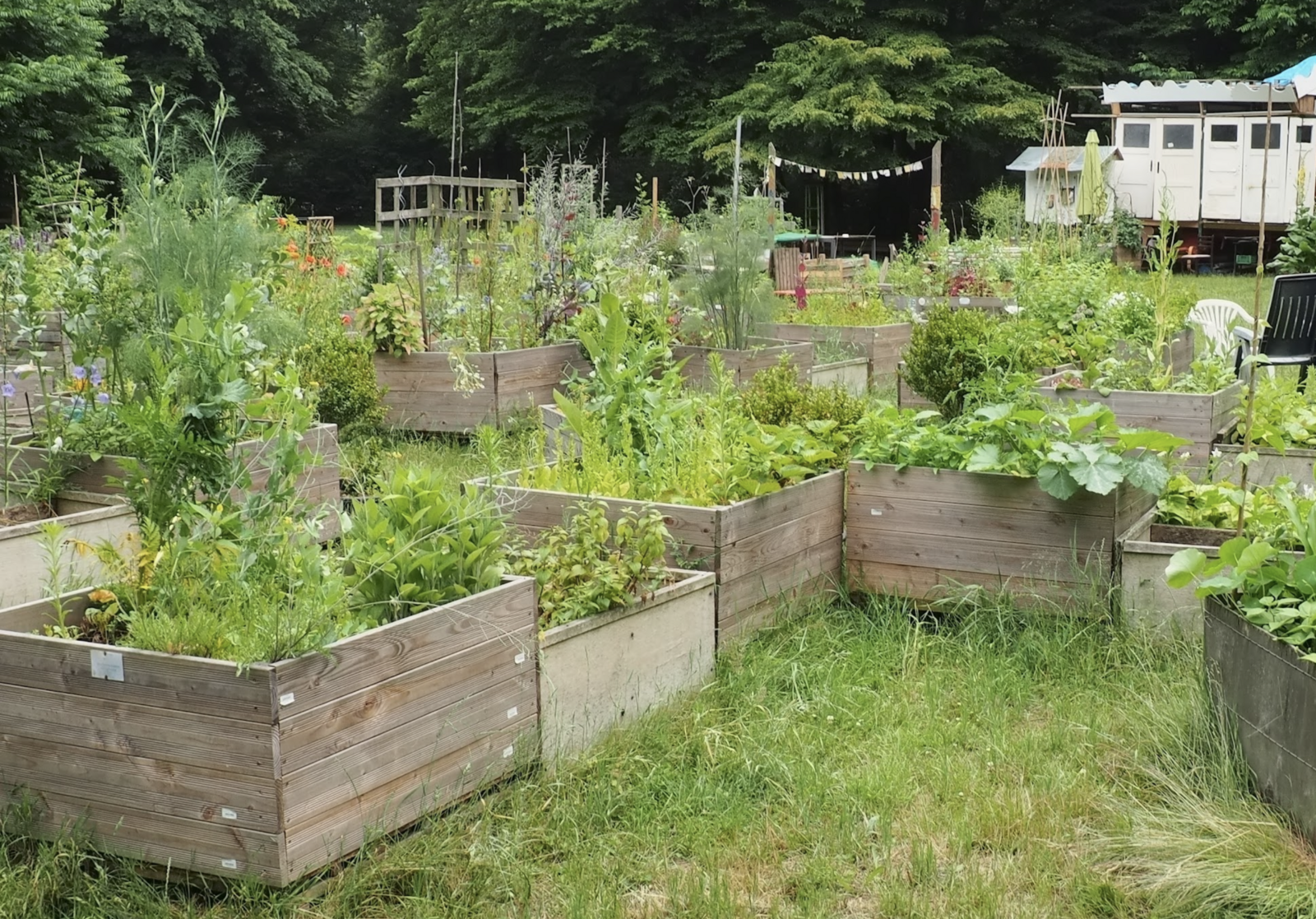
Raised Beds: Your Planting Plan for a Year
The raised bed is in place, the soil has been filled in and winter is slowly coming to an end. You can finally get started! Your first season in your own raised bed. You need a good cultivation plan so that you can make full use of your raised bed and always have something to harvest. In this article, I'd like to guide you through the gardening year and show you what a planting plan can look like in your raised bed throughout the four seasons.
This Article Contains:
- Planting Raised Vegetable Beds: Tips for Beginners
- Planting Raised Beds in the First Year
- Ideas for Your Planting Plan: Step by Step Through the Gardening Year
- Raised Garden Beds in Spring: February - April
- Raised Bed in Summer: May - September
- Ideas for the Winter: September - January
- More Ideas for Your Mixed Crop Planting Plan in the Raised Bed
- PDF: Your Planting Plan for a Year
- Frequently Asked Questions About Planting Raised Beds
Quick Overview
Planting Plan - Raised Bed in the 1st Year:
- Do not plant light feeders, but predominantly strong and medium growers
- Crops such as eggplant, tomatoes, pumpkin, zucchini, pepper/chilli, cucumber or melon are particularly suitable
- Click Here for the Planting Plan
Annual Plan for Your Raised Bed:
- Planting raised beds in spring: radishes, spinach, rocket, radishes, chives, lettuce, spring onions, broccoli, cauliflower, chard, swiss chard
- Plant raised beds in summer: heat-loving crops such as tomatoes, cucumbers, peppers or eggplants; leeks, parsnips, kohlrabi, carrots, beetroot; kale, strawberries, chervil, dill, lettuce
- Raised bed in winter: Green manure or winter crops such as cabbage, hardy lettuce, spinach, carrots, parsley or dill
Planting Raised Vegetable Beds: Tips for Beginners
In a raised bed, there are many plants in a small space, so choosing the right species and variety of vegetables can help you to have a high-yield harvest. Varieties with a short cultivation period or a long harvest period are particularly suitable. The shape of the plants is also crucial. If the plants grow more in height than in width, you can plant more in your raised bed. Alternatively, plants that need a little more space, such as pumpkins, can hang over the edge.
Planning a Harmonious Mixed Crop for Your Raised Bed
A raised bed provides a good basis for many species. You can turn it into a vegetable, herb or flower bed or combine different crops. Of course, what you plant depends on what you would like to have in the raised bed. As in a normal bed, however, it is important that all plants harmonize with each other. To do this, it is important to know good and bad plant companions in order to plant a functioning Mixed Culture. It is also advisable to plan Crop Rotation well.
Planting Raised Beds in the First Year
As the supply of nutrients is very high in a newly created raised bed, you should grow heavy rather than light feeders in the first year. Most light feeders are leafy vegetables such as lettuce. These store the excess nitrogen in the leaves, which is not good for consumption. However, some strong or medium growers can also tend to store nitrate. For example, turnips or goosefoot plants, such as spinach and chard, should also not be grown in the first year.
It is best to build your raised bed in spring so that you can start planting your bed with heat-loving heavy feeders such as eggplants, zucchinis, pumpkins and peppers in May. You can find instructions on how to build your own Raised Bed in this article. Here we also provide tips on how to fill raised beds correctly.
Example of a Planting Plan - The First Year in Summer:
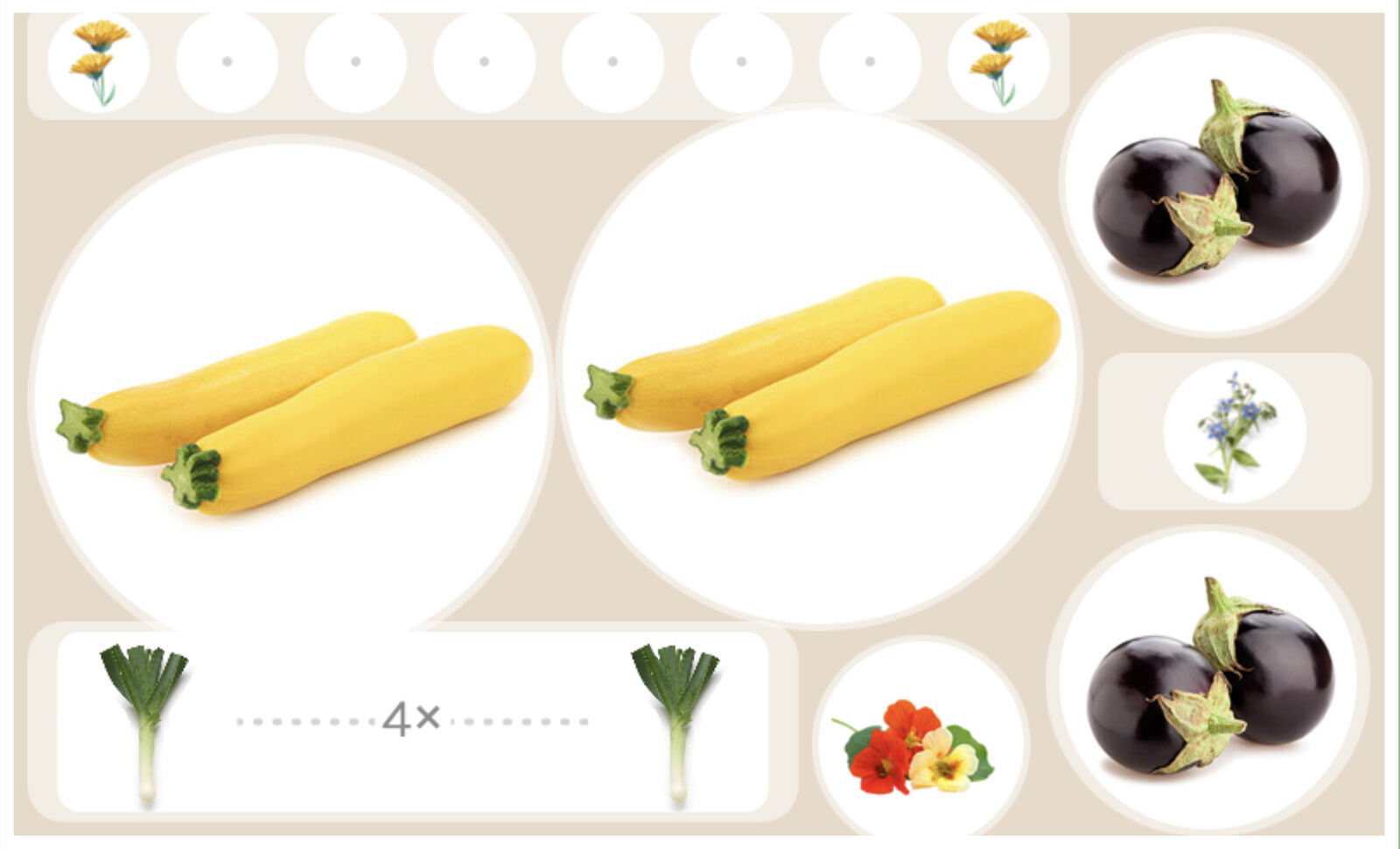
In addition to heavy feeders such as eggplants, zucchinis and leeks, this raised bed is also home to flowering plants with lower nutrient requirements: marigolds, borage and nasturtiums. These three flowers are valuable companions in a mixed culture. Not only are they very healthy for humans, they also have a positive effect on soil and plant health. They also attract pollinating insects as they provide food and habitat. Eggplants, zucchinis and nasturtiums form tendrils that you can let grow over the edge of the raised bed. This not only looks very decorative, but also makes optimum use of the available space.
Medium to light feeder crops such as various winter lettuces, e.g. lamb's lettuce, or plants with a short cultivation period such as radishes, are suitable as a secondary crop. Alternatively, it is best to sow a green manure crop such as winter rye (can be sown until the end of October), which is not harvested.

Plan Your Mixed Cultivation With Fryd!
With our bed planner, you can easily plan a colourful mixed crop. Good and bad neighbours are displayed directly and you get tips on crop rotation and crop rotation for a perfect mixed crop in your raised bed!
Plan Your Bed NowIdeas for Your Planting Plan: Step by Step Through the Gardening Year
To give you inspiration and ideas for your planting plan, we have created a year-round overview. You can see which crops you can plant at which time of year. We have also created digital planting plans for you, with an example of pre- and post-crops.
Raised Garden Beds in Spring: February - April
We start the cultivation planning in March. At the beginning of spring, you can sow the first (less cold-sensitive) vegetables of the year in your raised bed. Due to the faster warming of the soil in the raised bed, this is possible a little earlier than in a "normal" bed.
Suitable Vegetables for Spring:
- radish and radishes
- spinach and chard
- rocket
- picking lettuce (such as oak leaf or lollo rossa)
- vegetable and spring onions, chives
- broccoli, cauliflower
- cress
Our tip: To protect against late cold snaps, you can stretch a gardener's fleece over your raised bed. This will store the heat in the raised bed better and significantly reduce the risk of late frosts for your young plants.
What Can I Sow in the Raised Bed in February and March?
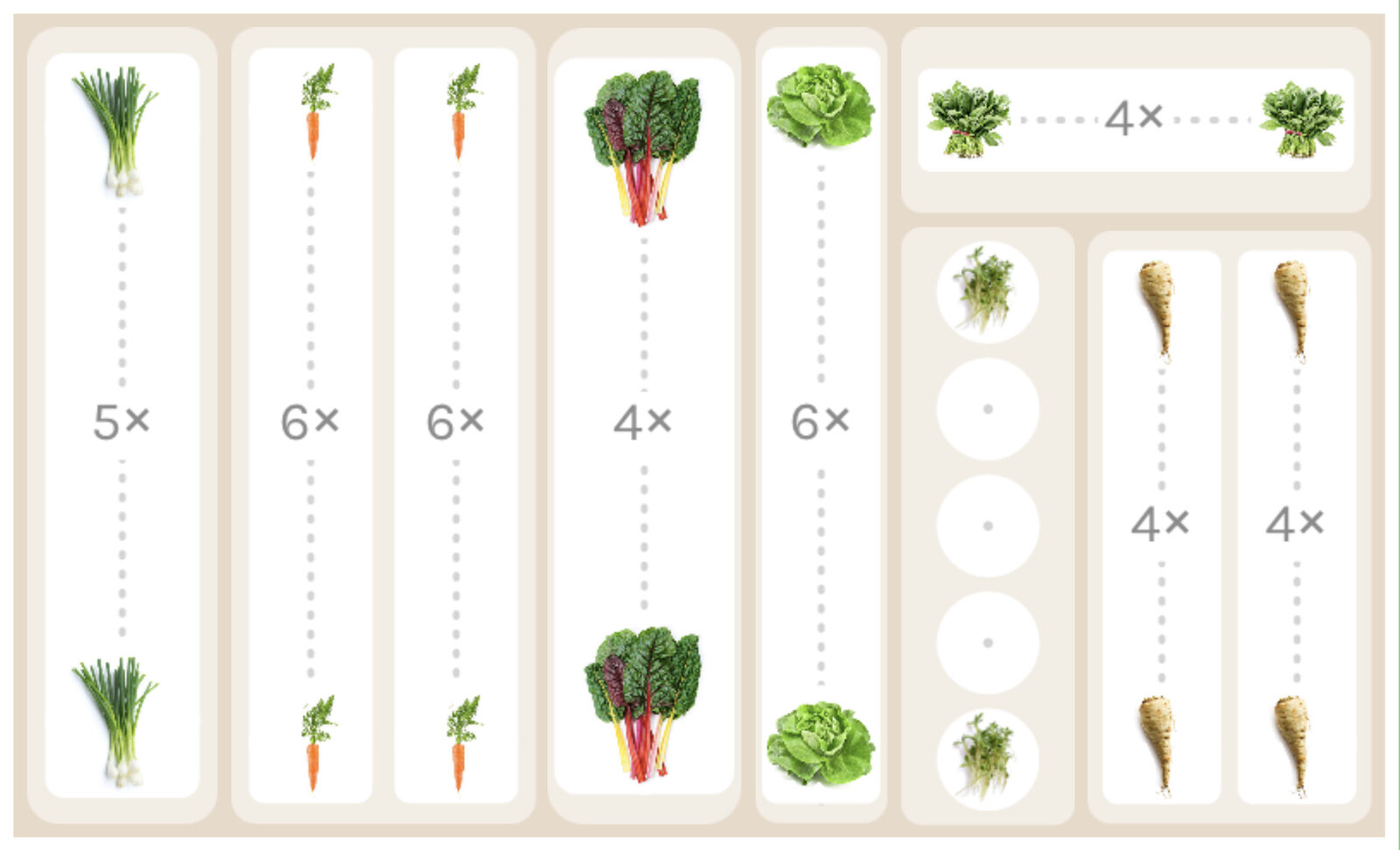
At the beginning of the season, you can sow crops that can cope well with colder temperatures. In February, you can sow the leafy vegetable chard, e.g. the robust variety 'Bright Lights', as well as spring onions directly into the raised bed. Spring onions are an heirloom variety of spring onions. They grow perennially and can be harvested all year round from February until the first frosts. In March, you can then sow early carrots (e.g. 'Lange Loiser') and parsnips (e.g. 'Halblange Weiße'). These crops will remain in the bed throughout the summer. You can also sow lettuce, spinach and cress now. These crops only have a short cultivation period and make room in the bed in May.
Prefer Heat-Loving Crops
In March, you can also start pre-growing some plants that you want to plant out in your raised bed towards the end of spring (tomatoes, peppers, etc.). Not all crops need to be pre-grown, but you should give heat-loving crops a head start!
Here you can read about which Crops You Prefer to Preplant and Which Are Better Sown Directly.
Raised Bed in Summer: May - September
Things really get going in May. The cold-sensitive species that you have been growing at home or in your cold frame since March can now (after the "ice saints") be safely planted outdoors. These include tomatoes, cucumbers, peppers/chili peppers, eggplants and pumpkins.
If you still have space in your raised bed or if space has become available again due to harvesting, you can fill the gaps in June and July. These crops, for example, are suitable for this:
- leek
- parsnip
- kohlrabi
- carrots
- beetroot
In August , summer is slowly coming to an end and you can start planning your raised bed for winter. Suitable vegetables and herbs for late summer are, for example
- kale
- strawberry
- chervil
- dill
- salads such as radicchio, endive or lamb's lettuce
Some of these plant species are also proven winter crops and will continue to provide you with fresh flavor and plenty of vitamins during the cold season.
Your Raised Bed Could Look like This in Summer:
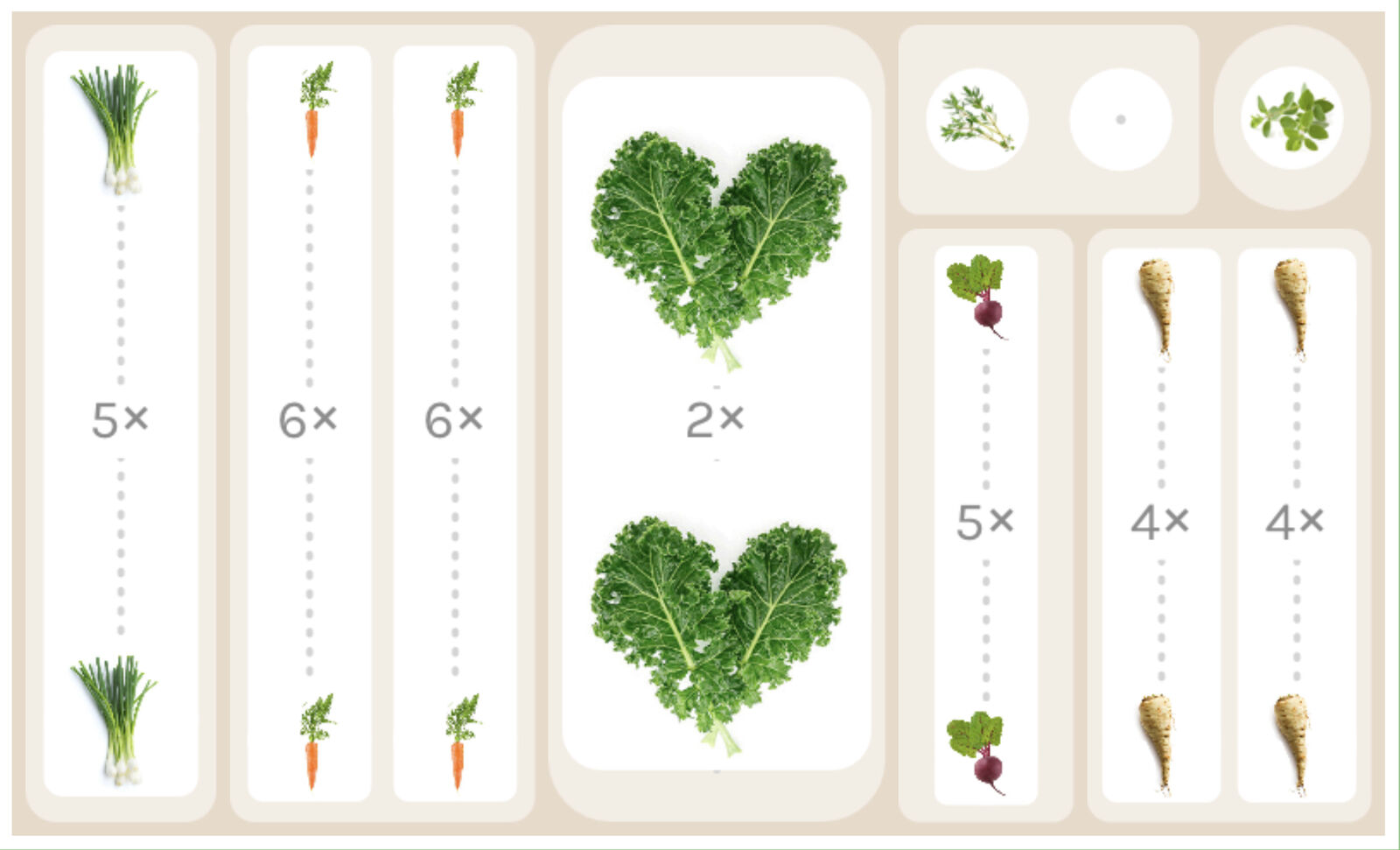
From May, the spring onions are ready to be harvested for the first time. The carrots and parsnips have already sprouted and are growing into small young plants. If you have sown too densely, you can thin out the rows a little. By mid-May, the cress will have been harvested and you can sow the beetroot. Where the spinach was, you can now sow marigolds and plant savory seedlings (summer savory, as it grows as an annual). Lettuce and chard make way for oregano and kale. You can either sow kale directly into the bed from June until the end of September or you can grow your own seedlings from May. Kale can remain on the bed throughout the winter until February and can be harvested again and again.
Preplanting Winter Vegetables
In June (sometimes even as early as May), it is also time to start thinking about winter vegetables. Most hardy vegetables are now grown on the windowsill or in the greenhouse. There are some plants that survive the cold weather well in winter. If you grow these plants at home in summer, you can harvest earlier. Some examples of winter vegetables include stem, green, flower or Brussels sprouts, radicchio and tat soi. You can find more Winter Vegetables and Their Sowing Times here.
Ideas for the Winter: September - January
At the beginning of September, summer finally says goodbye and fall begins. Now you have two options:
- You can either continue to plant winter crops such as various cabbages, winter lettuce or spinach in the open areas
- Or you decide to Green Manure your soil
If you have not yet sown green manure, you can do so now. Or you can opt for a layer of mulch made from horn shavings; this will also release nutrients into your soil over time. However, it is better to plant your raised bed all year round.
Winter Sowing in Raised Beds
You can also sow some plants directly in your field in winter or plant them as seedlings. To be able to provide yourself with vegetables for as long as possible, we even recommend growing vegetables in your raised bed all year round. These vegetables are suitable for Winter Sowing:
- charcoal
- hardy salads such as endive or lamb's lettuce
- swiss chard
- spinach
- carrots
- radishes
- parsley
- dill
- winter postelein
Planting Raised Beds in Winter - An Example:
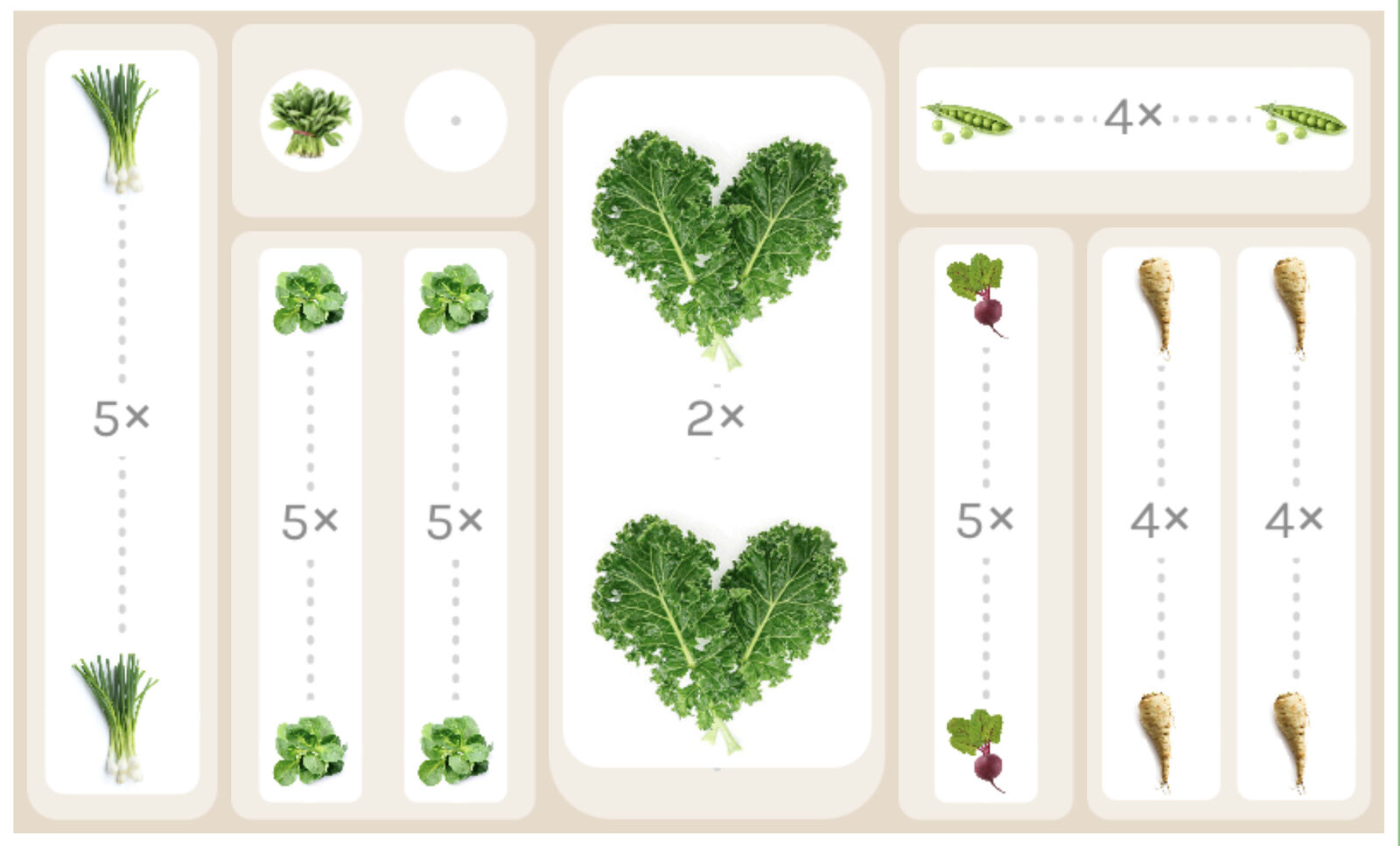
With the first frosts, the spring onion bulbs retreat into the soil and do not sprout again until March. By September, or early October at the latest, you should have harvested all the carrots. Instead, you can sow lamb's lettuce, which you can leave in the field and harvest until the following year. The same goes for spinach - you can sow its seeds between August and October and harvest them throughout the winter. You should at least cover the lettuce in very cold weather to prevent it from freezing. By mid-October, the last beetroots and parsnips have been harvested and there is room for something new. Here you can plant more leafy or headed cabbages such as palm kale 'Nero di Toscana'. You can also plant parsley and winter postelein as young plants in the bed. There are also winter peas that can be sown late in the year (until November).
More Ideas for Your Mixed Crop Planting Plan in the Raised Bed
Here you can find more inspiration for planting your raised bed with a colourful variety.
That's the whole gardening year in a nutshell. As you can see, you can use your raised bed all year round and it never has to be "empty" if you don't want it to be.
P.S.: This seasonal plan is just an example. Most of the species listed here can also be planted in your raised bed at completely different times than those described here. Due to the large number of possibilities with a raised bed, there are (almost) no limits to your imagination.
If you have any questions or comments, please write to us at [email protected].
Would you like to receive helpful gardening tips all year round and plan your own beds optimally? Then register here or download the Fryd app for Android or iOS.
Fryd - your digital bed planner

Marie
Marie is an agronomist. She is particularly interested in the sustainable and organic cultivation of vegetables and other plants. In her own garden, she gained experience and likes to try things out to learn from nature. She is particularly interested in the values and principles of permaculture, in order to contribute not only to the well-being of nature, but also to the well-being of people and future generations.
Learn MoreCurrent Topics in the Community
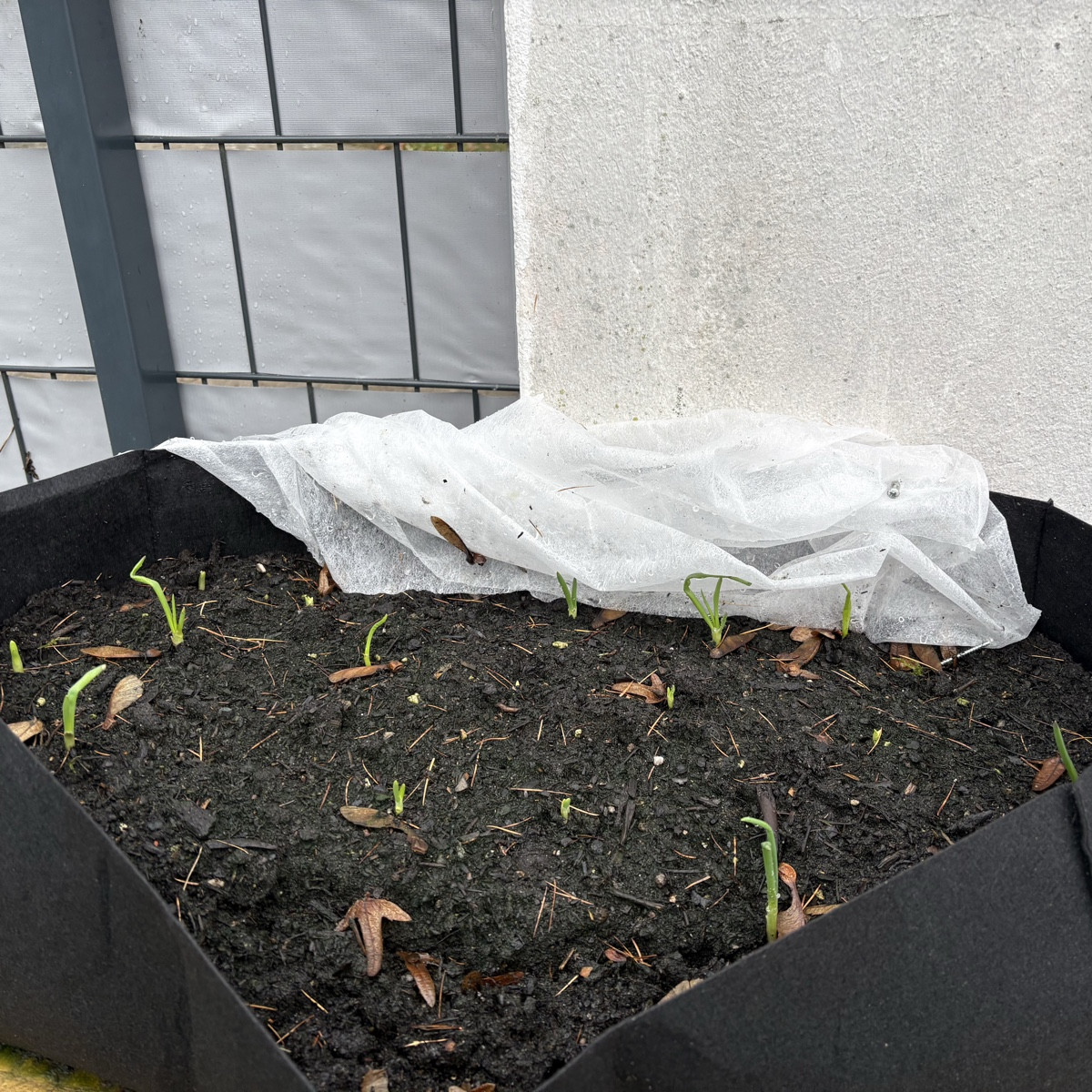
Liked 2 times
My winter onions are also growing quite well. They are of the Red Cross variety. I planted them on 28.10 in a felt pot 60x30x20 cm
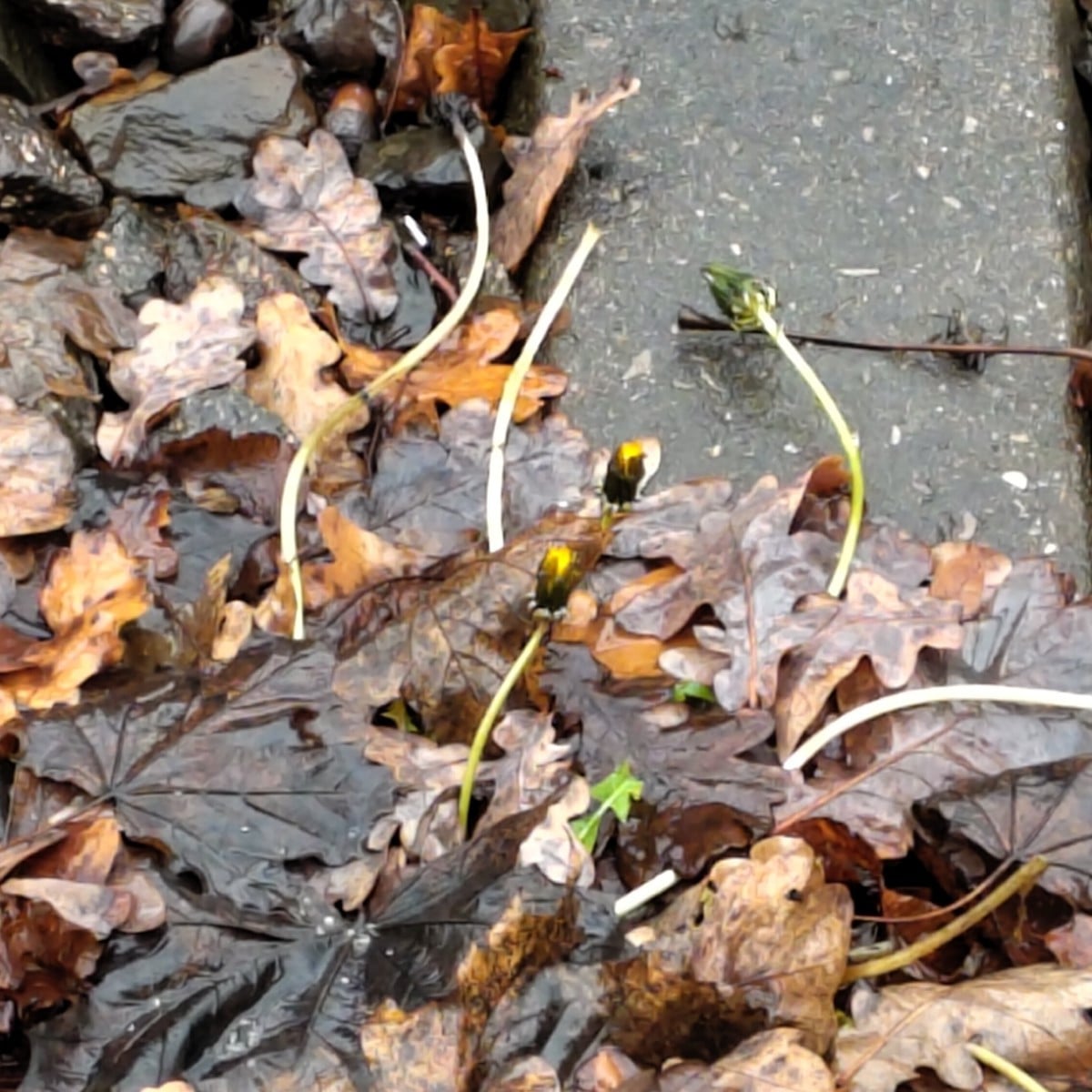
Liked 7 times
Another post from the curiosities section: I noticed this dandelion at the streetcar stop in a 'wintry' 13°C weather. It obviously thinks that snow and double-digit frost were enough winter and is now pushing new flowers through the foliage. It's a shame it's by the tracks, otherwise it would probably have ended up in my salad. 😋

Liked 17 times
As a suggestion for those who eat citrus fruits and have some time in the evening: simply cut a few simple shapes out of them with a sharp knife and dry them on the heater. The next day it was bone dry in our house ;)
Show 3 answersPopular Articles

Overwintering Parsley: How to Do It Successfully

How to Grow Lettuce in Winter: Varieties, Sowing, Harvesting

Growing Sage Plant: Tips for Sowing and Harvesting

What Herbs Can Be Planted Together?

Create & Design a Permaculture Garden

Overwintering Plants: Tubs, Pots and Raised Beds

Pruning, Fertilizing & Propagating Currants: Care Tips

Pruning Raspberries: How to Do It

Vegetable Garden With Greenhouse: How to Use Greenhouse Effect

Winterizing Beds and the Garden: How to Do It
FAQ
When can I start planting my raised bed?
You can plant your raised bed all year round and start sowing or propagating plants as early as February. However, you should choose cold-tolerant vegetables for this.
How can I plant my raised bed?
You can plant any vegetables in a raised bed: Tomatoes, eggplants, pumpkins, cabbage, radishes, etc. Due to the deep, loose soil, root vegetables grow particularly well in raised beds.
Can I plant my raised bed in winter?
You can also grow cold- and frost-tolerant crops in winter, such as cabbage or spinach. Alternatively, you can also sow green manure or apply a layer of mulch. The main thing is that your soil is not "bare".
Which crops are suitable for winter sowing?
Charcoal, hardy lettuces such as endive or lamb's lettuce, chard, spinach, carrots, radishes, parsley, dill or postelein are suitable for winter sowing. Note, however, that winter sowings usually grow slowly.
